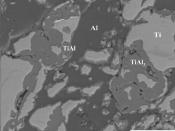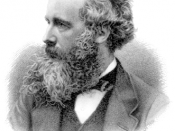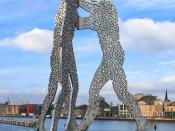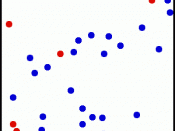James Clerk Maxwell and Ludwig Boltzmann are two 19th century physicists who are credited for the Kinetic Molecular Theory of Gases. By the mid 1800's the ideas of atoms and molecules seemed less strange than they did in 1800 so the assumptions built upon imagining a gas to consist of particles.
Ludwig Boltzmann (1844-1906) James Clerk Maxwell (1831-1879) - An ideal gas, one that supports the Kinetic Molecular Theory, consists of a large number of discreet molecules. Each of these molecules may consist of one atom or a group of atoms. These molecules are in constant, random motion and move in move in all directions with many different velocities. The velocity of any one molecule may change abruptly upon collision with the wall or with another molecule.
- The movement of the molecules laws of mechanics (Newton's Laws of Motion) ------------------------------------------ - No forces act on the time other than during collisions.
- During these elastic collisions, molecules interact with the walls of the container and with each other. among the particles, but the total kinetic energy remains constant.
- Molecules undergo three types of movement: the translation of molecules from place to place, vibration about fixed locations, and/or rotation around a center of mass.
- When particles bounce off of each other, some of the kinetic energy is converted into internal energy. But the molecules retain the internal energy for a very brief time before changing it back into kinetic energy, so this exchange of energy can be ignored entirely. This distribution of energy is called Maxwell-Boltzmann Distribution.
----------------------------------------- - The volume of each molecule is negligibly small when compared to gas. Even though there are many molecules, they are extremely small.
- These particles are also to the distances between them.
Therefore, they are sometimes referred to as points.
- Since gases fill all available volume it their containers, they are considered They are also less dense than two types of matter, liquids and solids.





